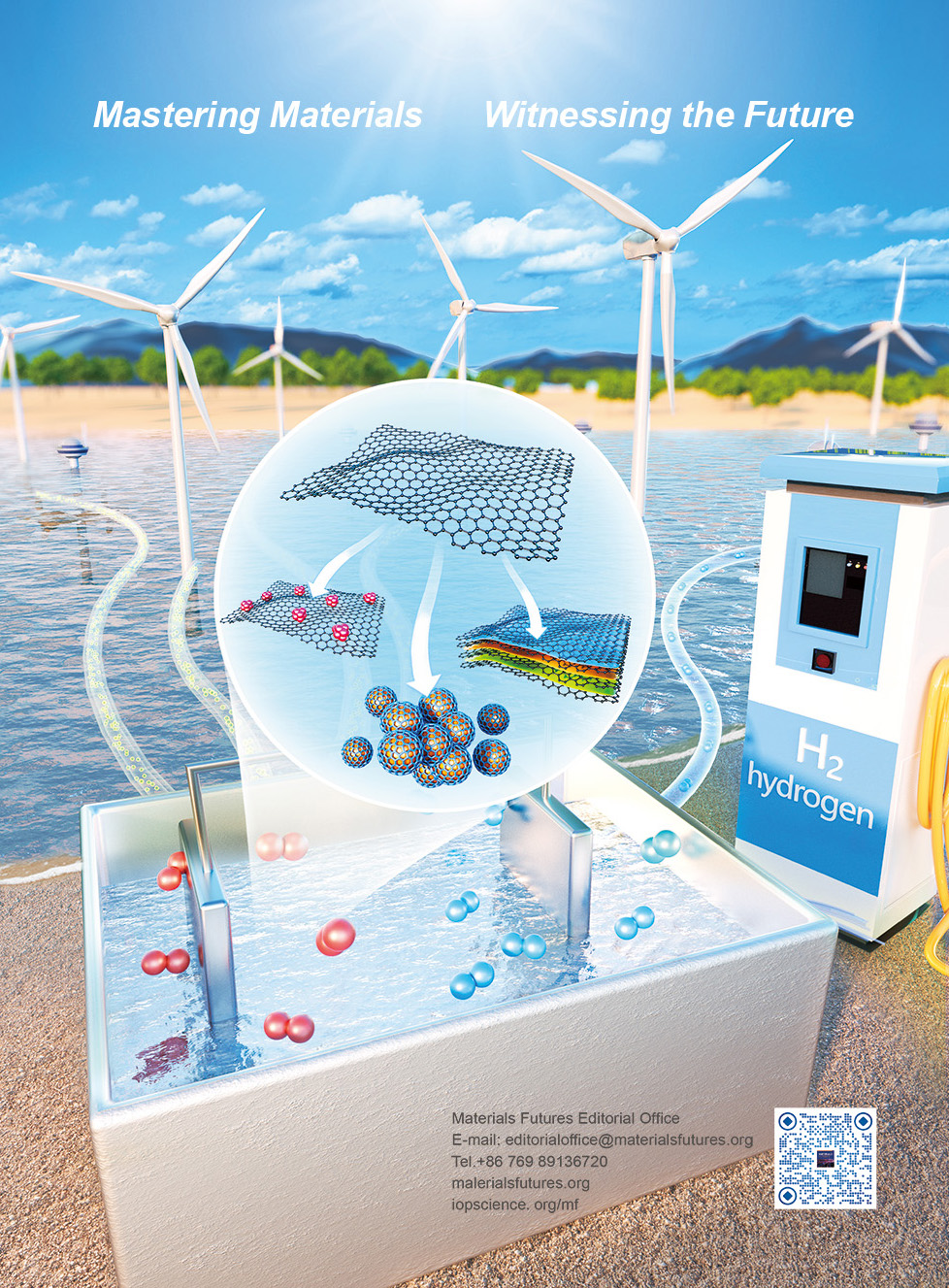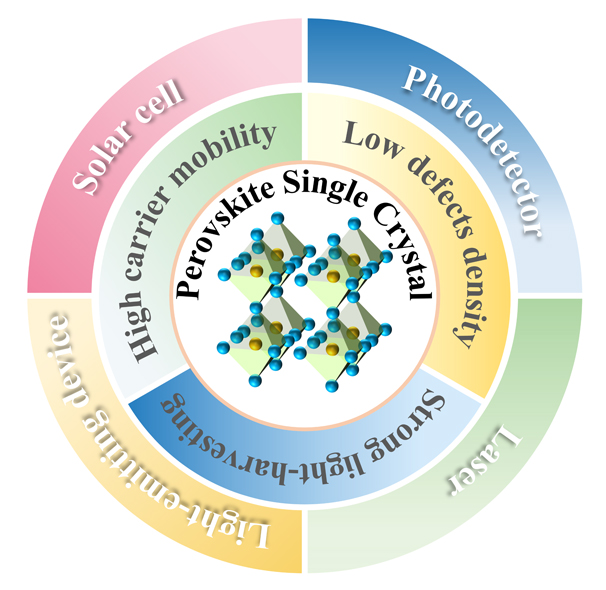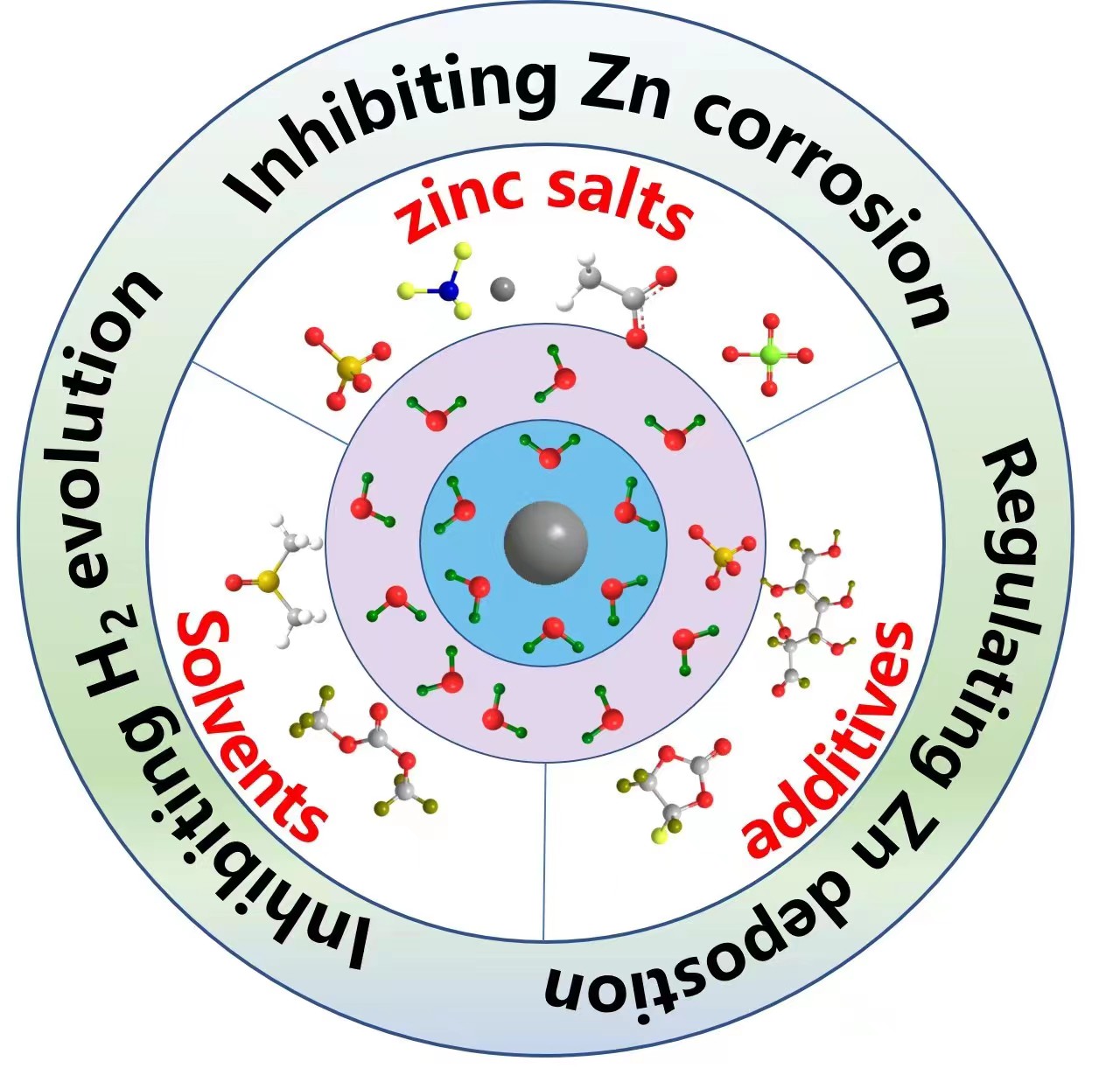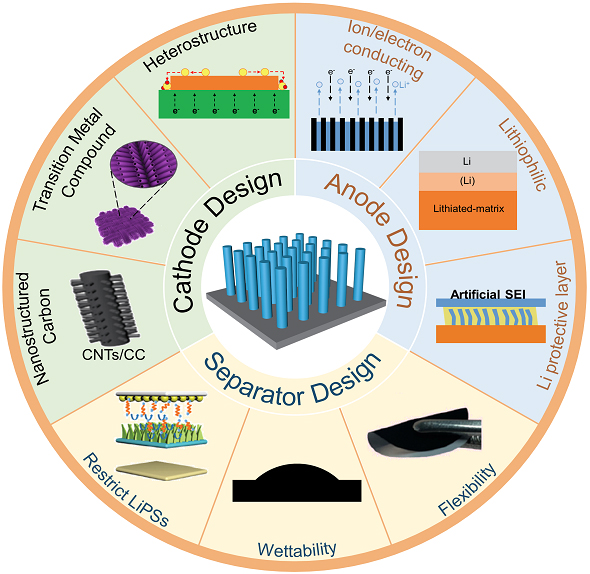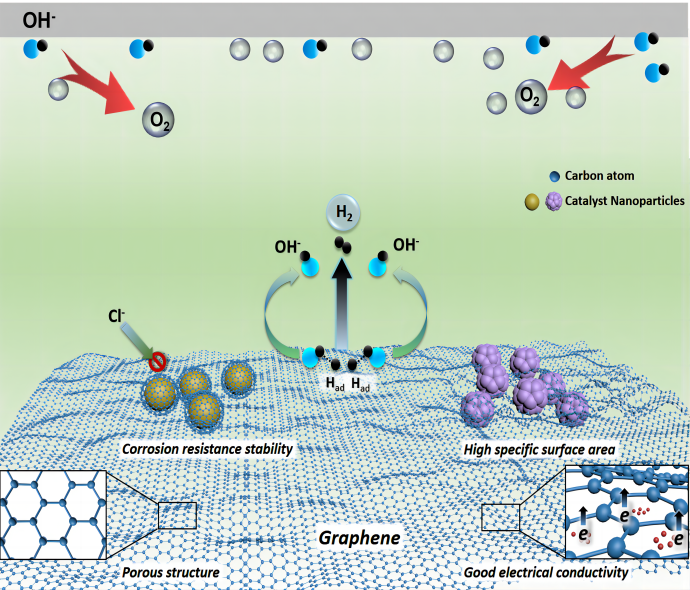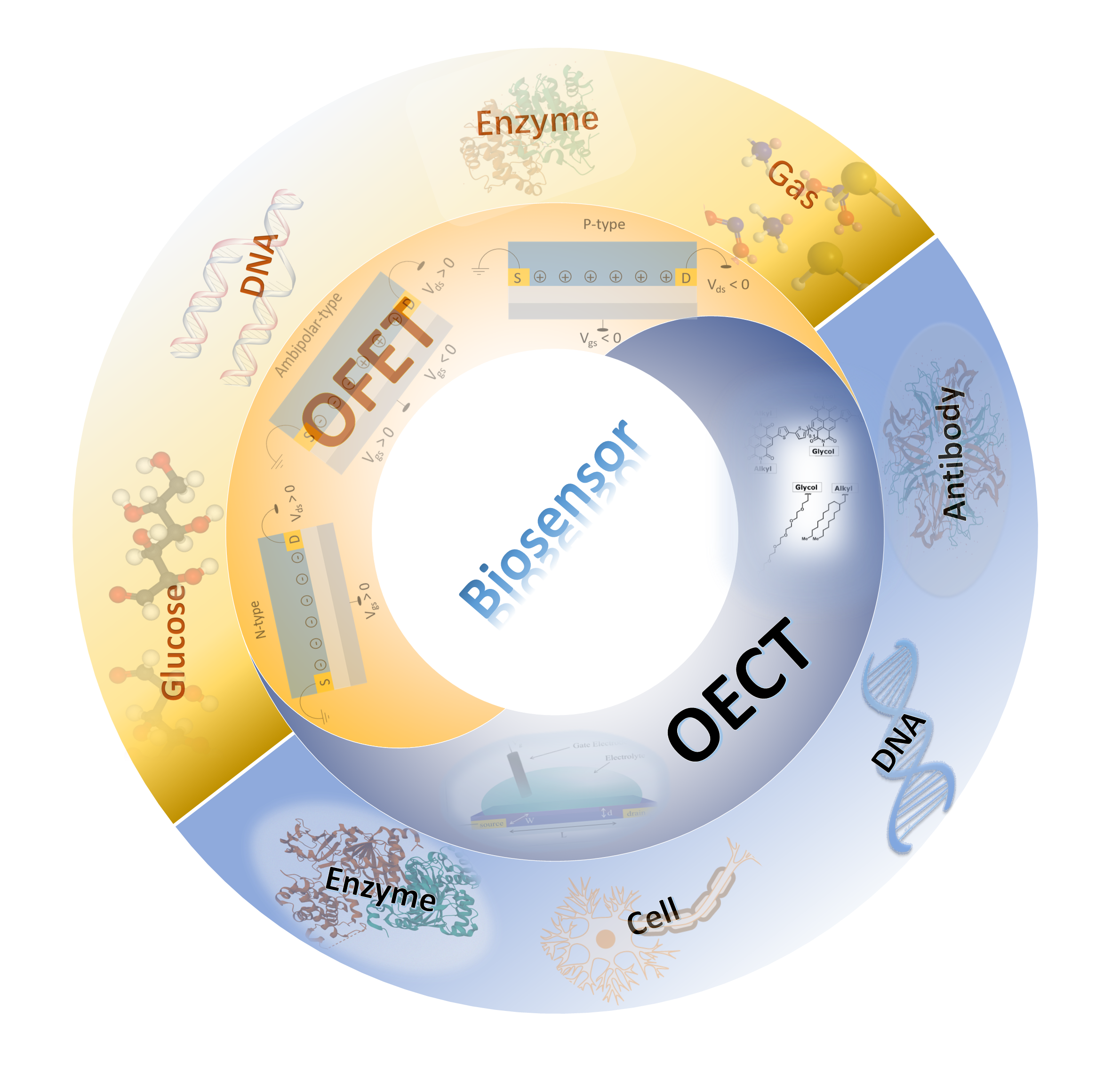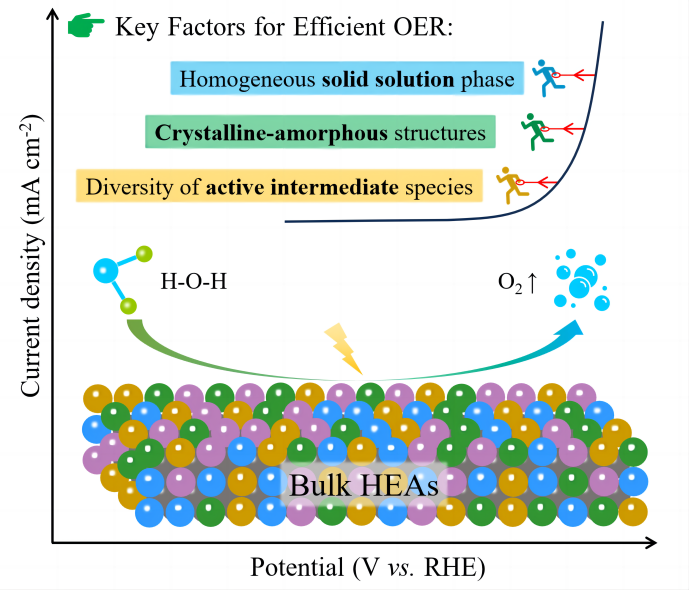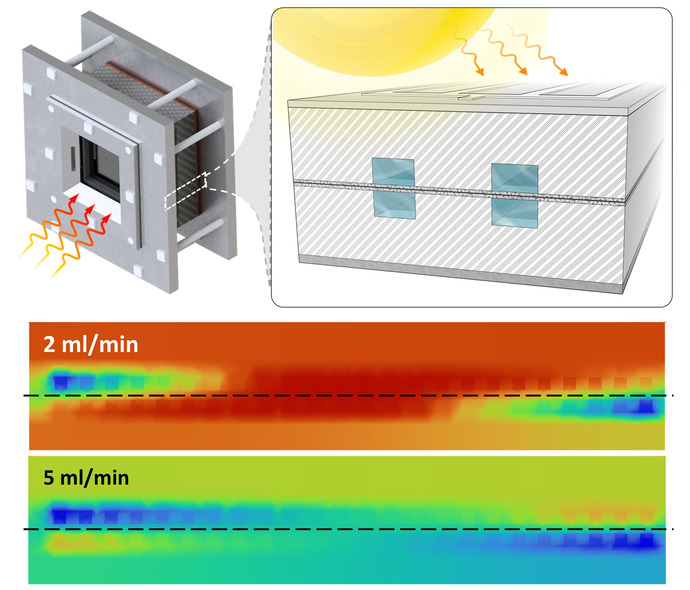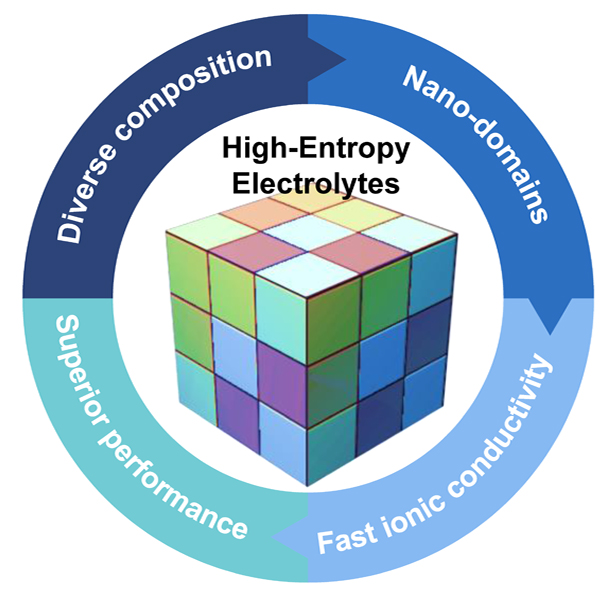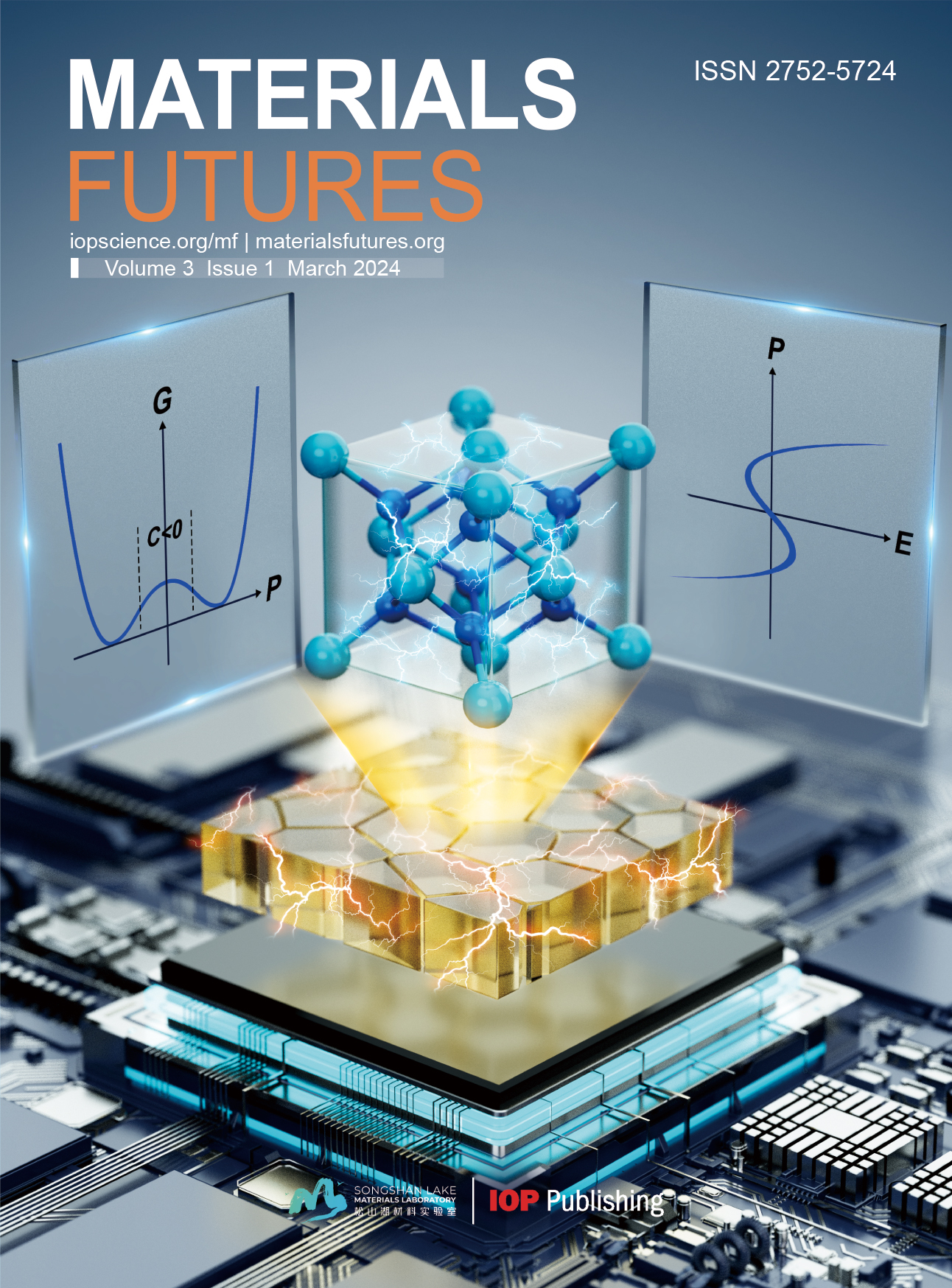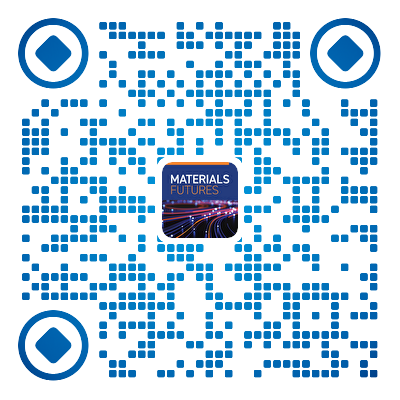2023 Vol. 2, No. 4
The advantage of photovoltaic (PV)-integrated flow cells for electrochemical energy conversion is the simultaneous storage of solar energy into chemicals that can be readily utilized for generating electricity. However, most studies overlook the practical challenges arising from the inherent heat exposure and consequent overheating under the sun. Hence, this work reports the impact of the flow channel block’s geometry and architecture on the temperature profile of the PV-integrated electrochemical flow cell under light exposure conditions by introducing a computational fluid dynamics method to provide insights and guidelines for the effective remedy of overheating.
PV-integrated flow cell
DOI: 10.1088/2752-5724/acf32e
Graphene-based materials exhibit excellent properties in terms of conductivity and catalysis. The advantages of their two-dimensional structure and catalyst combination have significantly expanded their application value in the field of seawater hydrogen production via electrolysis. In recent years, as research on hydrogen production through seawater electrolysis has advanced, critical issues such as high costs, low performance, and seawater corrosion have consistently plagued related studies. Through research on the composite structure of graphene and catalysts and an understanding of the catalytic mechanisms, it is expected that the design and application of high-stability, high-performance seawater electrolysis catalysts can be achieved. This paper primarily focuses on these topics, providing a detailed overview of the current state of seawater electrolysis and reviewing and discussing the utilization of graphene in various forms, including substrates, coatings, composite layers, and other catalyst designs for seawater electrolysis. The information presented here serves as a valuable reference for future research.
Graphene-based materials for Seawater electrolysis
DOI: 10.1088/2752-5724/acf2fd



